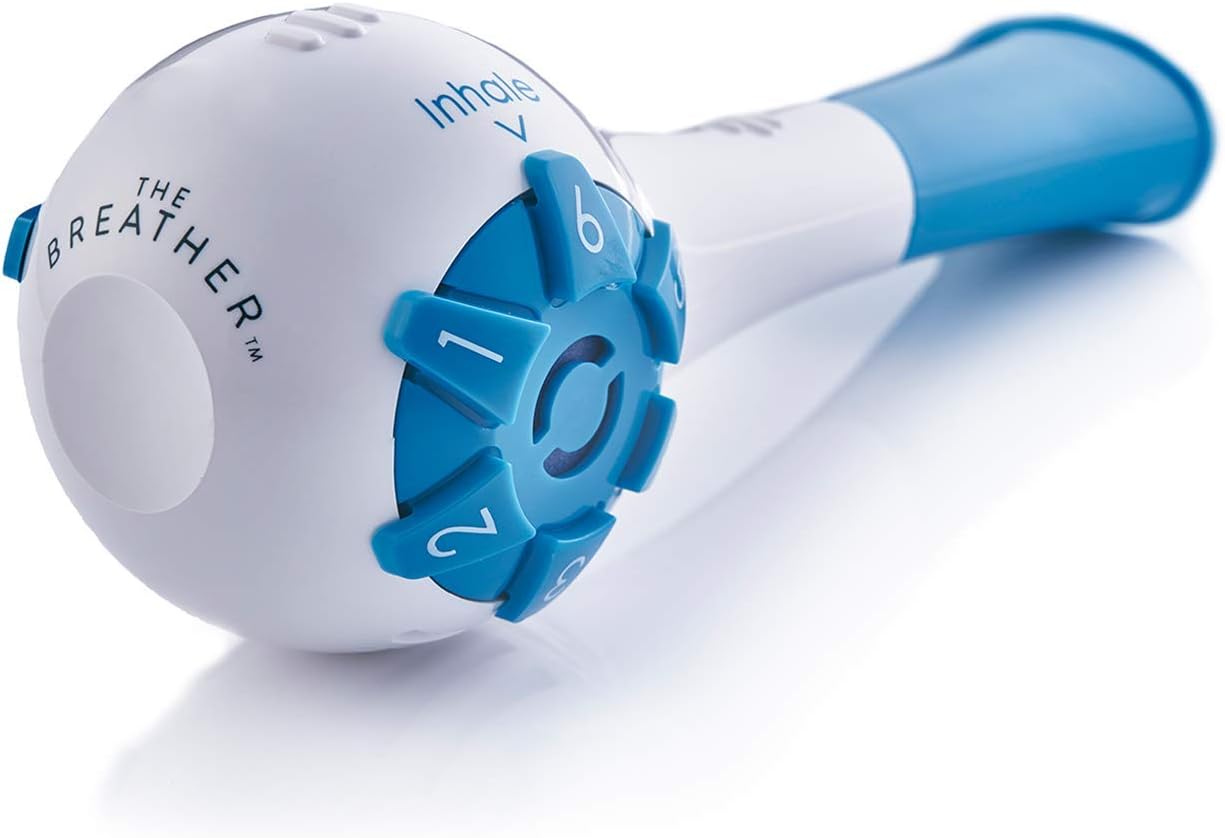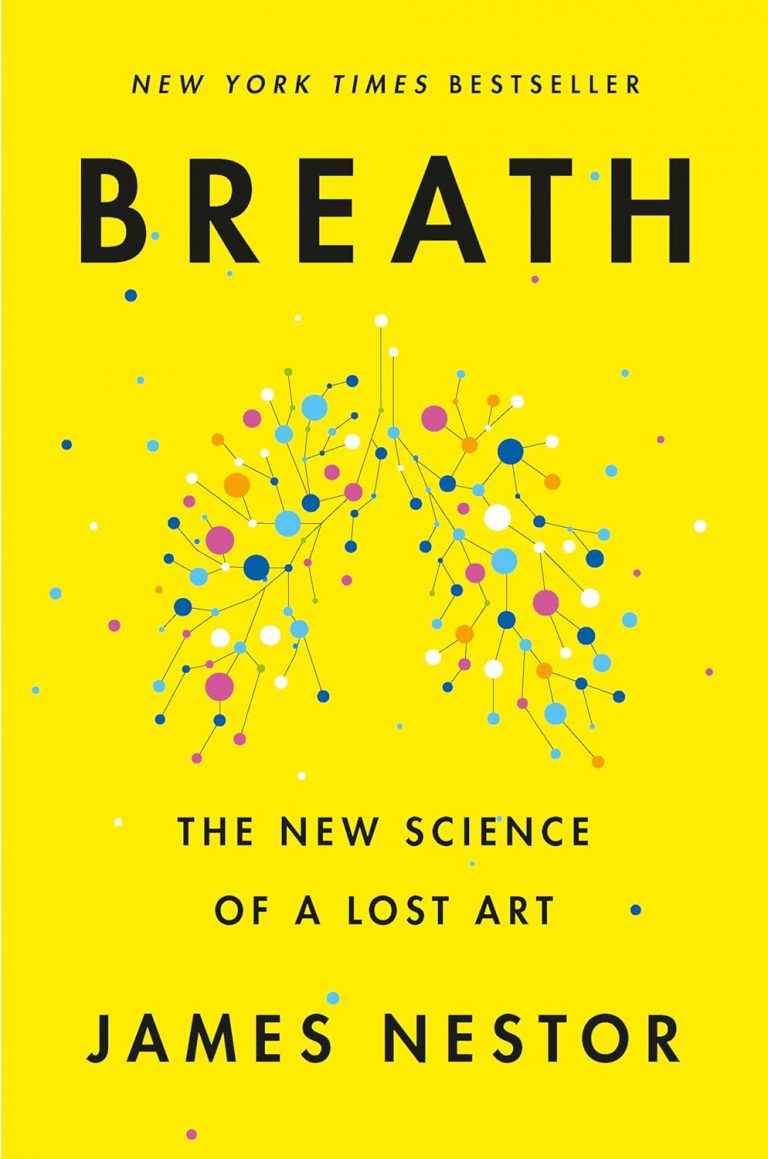Retrain Your Breath, Reclaim Your Calm: Can The Breather Help Your Anxiety?
When anxiety tightens its grip, or the first waves of panic start to crash, what’s the first thing that feels out of control? For many of us, it’s our breath. It becomes shallow, rapid, and feels like it’s working against us instead of for us. But what if you could train your breath to become your strongest anchor, your most reliable tool for finding calm even amidst the storm?
Enter The Breather, a unique, science-backed device designed to help you do just that. It’s not just about telling you to breathe deeply; it’s about actively retraining your breathing patterns to build resilience against anxiety and panic. Let’s explore how.
The Anxiety-Breathing Connection: Why Your Breath Holds the Key
It’s not just in your head – the way you breathe profoundly impacts your anxiety levels. Here’s the science breakdown:
- The Panic Trigger: When you feel anxious or panicked, your body often defaults to rapid, shallow, chest breathing. This pattern signals danger to your brain, activating the sympathetic nervous system – your body’s “fight-or-flight” response. This floods you with adrenaline, increases heart rate, and ironically, makes you feel more breathless and panicked.
- The Calming Signal: Conversely, slow, deep, diaphragmatic (belly) breathing activates the parasympathetic nervous system – the “rest-and-digest” state. This system actively counteracts the stress response, slowing your heart rate, lowering blood pressure, and sending calming signals throughout your body.
-
Evidence Backs It Up: Studies consistently show a link between controlled breathing exercises and reduced anxiety symptoms. For instance, research has demonstrated that breathwork can significantly lower stress hormones and improve feelings of well-being
Nature Study: The effect of slow breathing in regulating anxiety
The challenge? During peak anxiety or a panic attack, simply remembering or forcing yourself to breathe deeply can feel impossible. That’s where a tool like The Breather can offer valuable structure.
Your breath is more powerful than you think. The Breather is a lightweight, handheld device that strengthens your diaphragm and retrains your breathing patterns through adjustable resistance. Unlike generic breathing exercises, its dual-action design trains both inhalation and exhalation—key to interrupting the rapid, shallow breaths that fuel anxiety and panic.
How The Breather Aims to Help Anxiety Relief
The Breather isn’t just another gadget; it’s a Respiratory Muscle Trainer (RMT). Think of it like targeted exercise for the muscles that control your breathing.
- Design & Function: It’s a portable, drug-free device with adjustable dials for both inhaling (inspiratory) and exhaling (expiratory) resistance. By breathing against this gentle, controlled resistance, you strengthen your diaphragm and other key respiratory muscles.
-
Anxiety-Specific Benefits:
- Breaking the Cycle: Regular training can help strengthen your breathing muscles and improve your conscious control over your breath. This can make it easier to resist the urge to hyperventilate when anxiety spikes.
- Building Breath Awareness: The act of using The Breather requires focus on your breath, helping you become more attuned to your natural breathing patterns. This awareness can be an early warning system, allowing you to intervene with calming techniques before anxiety fully takes hold.
- Structured Practice: It provides tangible feedback and structure, guiding you towards the slower, deeper breaths that promote calm, similar in principle to techniques like 4-7-8 breathing but with added physical guidance.
How to Use The Breather for Anxiety Management
Integrating The Breather into your routine is straightforward:
- Set Your Resistance: Start with the lowest resistance settings for both inhale and exhale. You should feel a gentle effort, not strain. Gradually increase the resistance over days or weeks as your breathing muscles get stronger.
- Daily Practice: Aim for 5-10 minutes of practice, once or twice a day. Sit comfortably, place the mouthpiece in your mouth, and breathe slowly and deliberately through the device – inhaling against the set resistance, and exhaling against the other. Focus on breathing from your diaphragm (belly).
- Using it for Grounding: While primarily a training tool, the focused practice you build daily is crucial. Some users find that during moments of rising anxiety (not necessarily a full-blown panic attack), the familiar, structured act of breathing through the device can serve as a grounding anchor. Focus particularly on making the exhalation slow and complete against the resistance.
- Pair with Mindfulness: Enhance the benefits by combining your Breather practice with mindfulness techniques. Pay attention to the sensation of the air, the movement of your belly, or perform a quick body scan before or after your session.
- Consistency is Key: Like any form of exercise, the benefits come from regular practice. Consistent use helps build respiratory muscle strength and reinforces calmer breathing patterns, making you more resilient over time.
Supporting Evidence & Expert Opinions
While The Breather is often used for physical respiratory conditions like COPD (where studies have shown that improved respiratory function can correlate with reduced anxiety), the principles apply more broadly.
- Clinical Backing: Research supports Respiratory Muscle Training (RMT) for improving breathing efficiency and reducing the sensation of breathlessness Effect of Inspiratory Muscle Training on Anxiety. Feeling less physically vulnerable to breathlessness can indirectly reduce a major anxiety trigger for many.
- Therapist Insights: Many mental health professionals recognize the value of structured breathwork tools. As one therapist might say, “Tools that provide tangible feedback for breathwork can be incredibly helpful for anxiety sufferers. They move the practice from an abstract concept (‘just breathe’) to a concrete action, which can be very empowering.”
- Safety Note: The Breather is non-invasive and drug-free. However, if you have severe anxiety, panic disorder, or any underlying respiratory or health conditions, it’s always wise to consult with your doctor or a qualified healthcare professional before starting any new regimen.
(Disclaimer: Individual results may vary based on consistency, severity of symptoms, and other factors. This device doesn’t nothing to stop anxiety, rather it provides strengthening to the diaphragm which in turn may make some users better able to control their breathing through a panic attack or while feeling anxiety.)
FAQs About The Breather and Anxiety
-
Q: Can The Breather replace therapy or medication for anxiety?
- A: No. The Breather is best viewed as a complementary tool to support your overall anxiety management plan, which may include therapy, medication, lifestyle changes, and other coping strategies.
-
Q: How soon will I feel results for anxiety?
- A: This varies greatly. Some people notice a subtle sense of calm or control within a few days or weeks of consistent practice. Building significant respiratory strength and resilience takes longer. Focus on the practice itself rather than immediate results.
-
Q: Is it easy to use during a panic attack?
- A: The Breather is primarily designed for training your breathing when you are calm. While the familiarity and focus might offer some grounding during mild or rising anxiety, using it during the peak of an intense panic attack might be difficult. The daily practice is what builds the resilience to better manage attacks when they happen. For in-the-moment panic relief, tools specifically designed for pacing breath, like our Digital Breathing Tool, might be more suitable.
Conclusion: Take Back Your Breath, Take Back Your Calm
Anxiety might feel like it steals your breath, but tools like The Breather offer a way to actively train your body and mind to steal it back. By strengthening your respiratory muscles and fostering greater breath awareness, you’re not just improving physical function – you’re building a powerful foundation for emotional regulation and resilience.
Consider exploring The Breather as one component of your anxiety toolkit, alongside therapy, mindfulness, and other evidence-based strategies. Remember, small, consistent efforts in managing your breath can lead to profound shifts in your mental well-being. You have the power to cultivate calm, one breath at a time.



